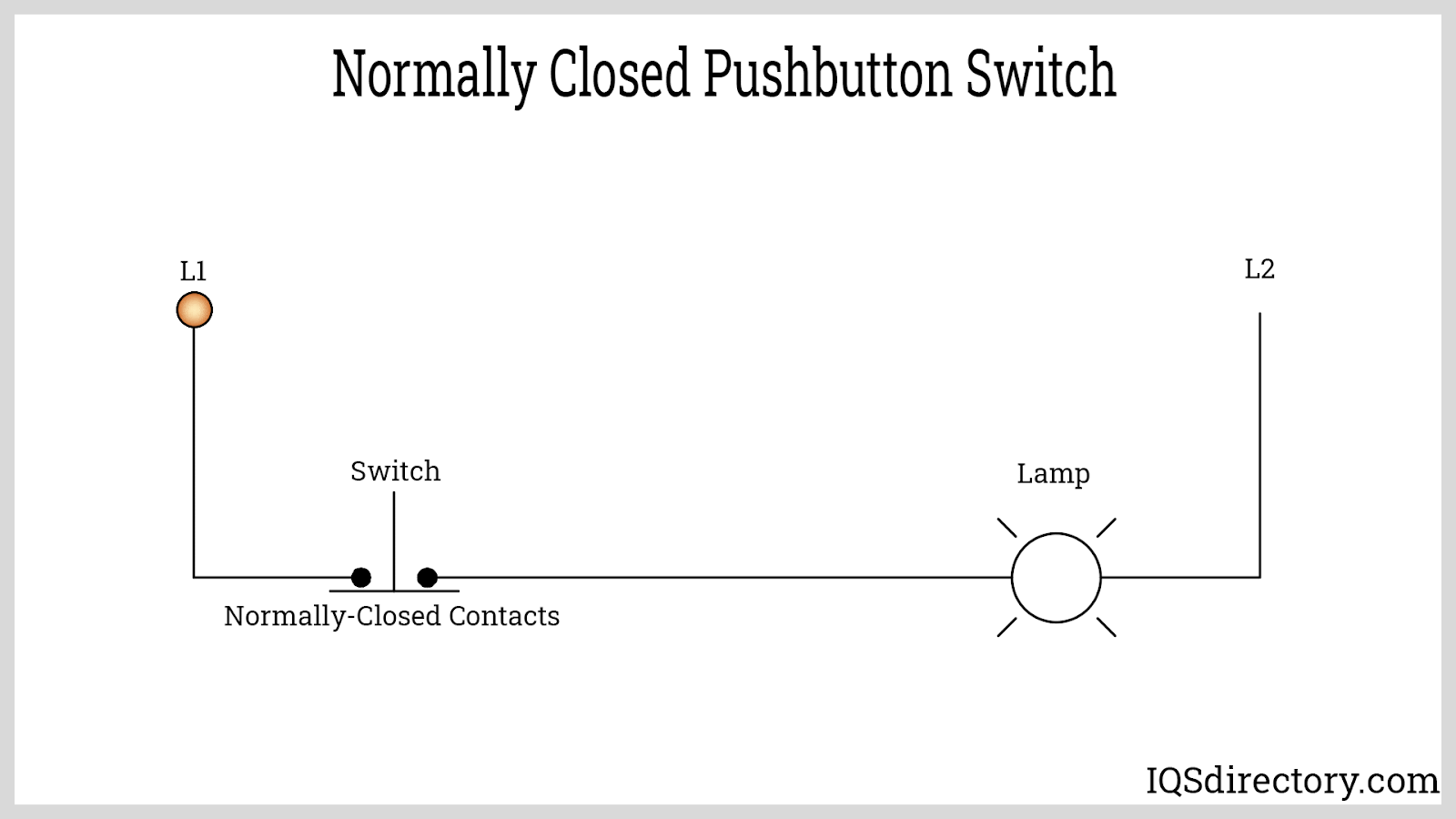Introduction
Push button switches are a common yet important component found in various electronic devices and systems. They play a crucial role in controlling the flow of electricity and enabling users to interact with different functionalities. This comprehensive guide aims to provide you with a deep understanding of push-button, including their working mechanism, applications, and factors to consider when choosing the right one for your needs.
What Are Push Button Switches?
Pressing a button or actuator activates push button switches, which have widespread usage in various electronic devices, control panels, industrial machinery, and many other applications. The design of the push button aims to offer a user-friendly interface for controlling electrical circuits and devices.
These switches are commonly used in a wide range of devices, including but not limited to appliances, control panels, computers, automotive systems, and industrial equipment. They are versatile and can be found in both residential and commercial settings.
How Do Push Button Switches Work?
Push button work on the simple principle of making or breaking an electrical connection. When the button is pressed, it moves an internal mechanism that either completes or interrupts the flow of electrical current. This action allows the switch to control the operation of a device or circuit.
The Mechanism Behind the Button
When a user presses the button of a push button, it initiates a mechanical action that activates the contact mechanism inside the switch. The contact mechanism involves various components, such as springs and conductive materials, that work together to establish or interrupt electrical connections.
As the button is released, the contact mechanism reverts to its original state, thereby reversing the current flow.
The Anatomy of a Push Button Switch
A push button has several essential components that work together to enable its functionality. Understanding the anatomy of a push button switch is crucial in comprehending how it operates and how different types can be suitable for specific applications.
Basic Components of a Push Button Switch:
The basic components of a push button switch include:
- Button: The external part that is pressed by the user to activate the switch.
- Contact Mechanism: The internal mechanism responsible for making or breaking the electrical connection when the button is pressed.
- Housing: The enclosure that houses and protects the internal components of the switch. These components may also include additional features such as LED indicators, terminals for connection, and mounting options depending on the specific switch model.
These components may also include additional features such as LED indicators, terminals for connection, and mounting options depending on the specific switch mode
Different Types of Push Button Switches
Push button switches are available in various types, each suited for different applications. Some common types include:
Normally Open (NO) Push Buttons: These switches maintain an open circuit when not pressed and close the circuit when pressed, allowing current flow.
Normally Closed (NC) Push Buttons: These switches maintain a closed circuit when not pressed and open the circuit when pressed, interrupting the current flow.
1. Momentary Push Button Switches
Momentary push button switches, also called momentary switches or normally open (NO) switches, are designed to create a temporary electrical connection when someone presses the button. Once the button is released, the connection is broken. People commonly use these switches for applications that require a momentary action, such as doorbells, gaming controllers, and machine controls.
2. Latching Push Button Switches
Latching push button switches, also called toggle switches or on/off switches, keep their state after someone presses them. These switches have two stable positions, usually labeled as “on” and “off,” and they stay in that position until someone manually actuates them again. People commonly use latching push button switches in devices such as power switches, lighting controls, and appliances.
3. Illuminated Push Button Switches
Illuminated push button switches include built-in LED indicators that give visual feedback when someone activates the switch. These switches are frequently used in applications where visibility is vital, such as control panels, gaming keyboards, and audio equipment.
The LED indicators can be single-color or multi-color, allowing for customization and enhanced user experience.
4. PCB-Mount Push Button
PCB-mount push button switches are designed for direct mounting on printed circuit boards (PCBs). These switches have terminals or pins that you can solder onto the PCB, offering a compact and space-saving solution for electronic devices and equipment. Most of the push button switches are made for PCB mounting.
5. Sealed Push Button
Sealed push-buttons have a design that enables them to endure harsh environments and offer protection against dust, moisture, and other contaminants. Typically, these switches consist of a sealed enclosure and a durable actuator, guaranteeing reliable operation even in demanding conditions. Sealed push-button find applications in outdoor equipment, marine environments, and industrial machinery.
6. Anti-Vandal Push Button Switches
Anti-vandal push buttons possess ruggedness and tamper-resistant qualities, which make them an excellent choice for applications demanding a high level of security and durability. These switches feature robust construction with a vandal-proof design, preventing unauthorized access or malicious tampering. Anti-vandal switches are commonly used in access control systems, public kiosks, and industrial control panels.


7. Rocker Push Button Switches
Rocker push buttons have a rocker-style actuator that allows activation or deactivation by pressing on either side. These switches are commonly employed in household appliances, automotive controls, and industrial equipment.
8. Mushroom Head Push Button Switches
Mushroom head push buttons are recognizable by their large and prominent actuator, which resembles a mushroom. This design allows for easy and quick actuation, even in situations where the user is wearing gloves or has limited dexterity. Mushroom head push buttons are commonly used in emergency stop buttons, machinery controls, and industrial safety applications.
9. Keylock Push Button
Keylock pushes button switches provide an additional layer of security by requiring a key to actuate the switch. Their versatility enables their usage in diverse devices and systems, enhancing the overall user experience and functionality.
10. Tactile Push Button
Tactile push buttons possess tactile feedback, offering a physical “click” or tactile sensation upon pressing. This feedback assists users in confirming the actuation of the switch. Tactile push buttons find common usage in keyboards, game controllers, and other applications that require a responsive user interface.
Applications of Push Button Switches
Push button switches have a wide range of applications in both everyday life and industrial settings. Their versatility allows them to be used in various devices and systems, contributing to the overall user experience and functionality.
Push Button Switches in Everyday Life
In addition to electronic devices like remote controls, keyboards, and gaming controllers, It is also found in simple objects such as doorbells, light switches, and elevator buttons. This widespread use enhances convenience and ease of use for various applications.
Industrial Applications of Push Buttons
Push buttons find extensive usage in industrial settings because of their reliability and ability to endure demanding environments.
They are utilized in machinery controls, control panels, assembly lines, and automation systems.
Choosing the Right Push Button Switch
Choosing the right push button switch for your specific needs requires careful consideration of several factors. By understanding these factors, you can make an informed decision and select a switch that meets your requirements.
Some important factors to consider when buying a push button switch include:
- Functional Specifications: Determine the specific functionality and switching requirements needed for your application.
- Environmental Considerations: Assess the conditions in which the switch will operate, including temperature, humidity, and exposure to dust or liquids.
- Mounting and Size: Consider the available space and mounting options to ensure compatibility with your intended setup.
- Reliability and Durability: Evaluate the switch’s lifespan and durability based on the expected frequency of use and the environment in which it will be placed.
By carefully evaluating these factors and conducting thorough research on various push button switch models, you can find a switch that suits your needs and delivers optimal performance.
Final Thoughts
Understanding how to use a push button switch is important for anyone working with electronics and biases. This handy helpful book provides depth look at the different types of switches, considerations when selecting switches, installation and wiring procedures, normal operation, and frequently asked questions.
Using this knowledge, you can safely select, install and use switches on the machine that allow you to manage and improve your stone products. They are the first choice for practical and reliable electronic control.
































